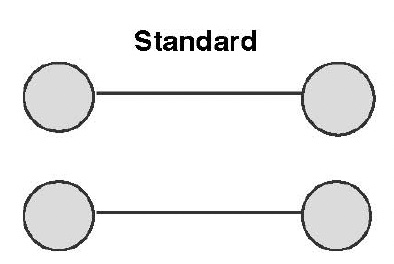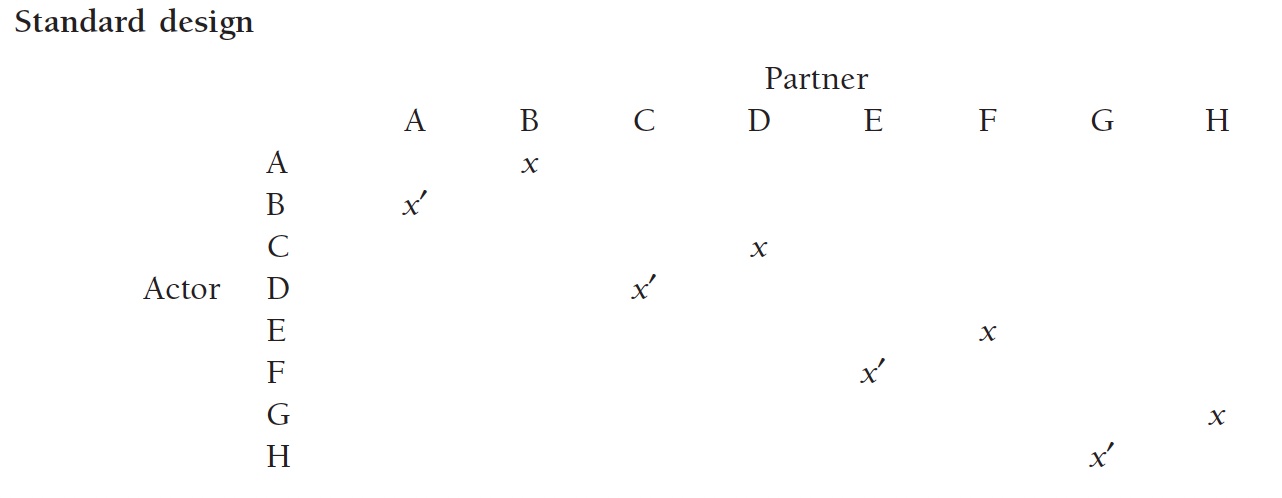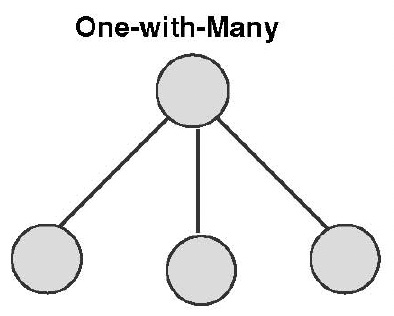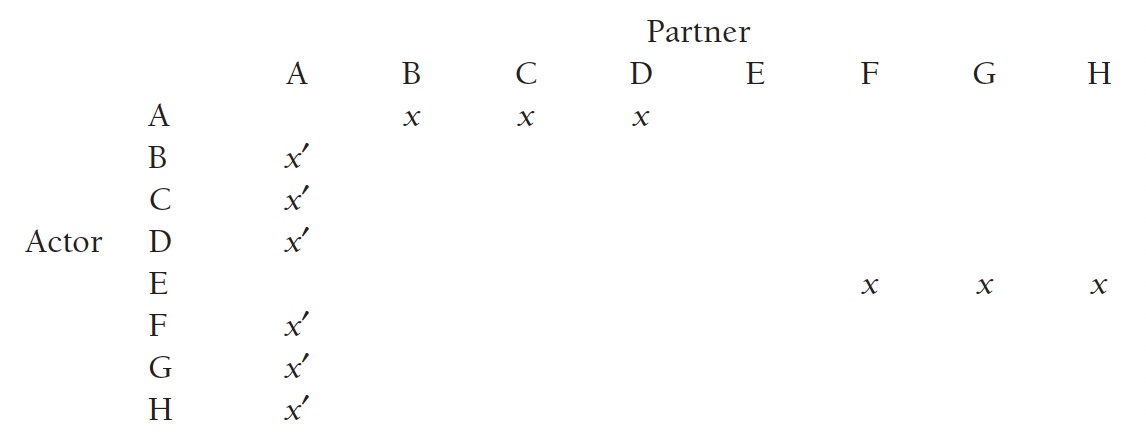15.4 Dyadic Designs
Before reviewing some common dyadic designs it is important to provide some definitions for interpreting the diagrams:
- Persons are designated by uppercase letters such as A, B and C.
- Actor refers to the person who generated the data.
- Partner refers to the other member of the dyad.
- An X in the A-B position refers to a rating from Person A about Person B.
- An X’ in the B-A position refers to a rating from B about A.
- In a one-sided only design, one member of the dyad is measured.
- Only X or X’ are collected.
- In a two-sided or reciprocal design both members are measured.
- Both X or X’ are collected.
Here we consider three different dyadic designs: (1) the standard dyadic design, (2) the social relations model (SRM), and (3) the one-with-many design.
15.4.1 Standard Dyadic Design

In the standard design each individual is a member of only one dyad. Generally the standard design will be reciprocal (i.e. both dyad members are measured).
In the table for the standard design:
- A and B are members of one dyad
- C and D are members of a second dyad,
- E and F are members of a third dyad, and
- G and H are the final dyad,
for a total of \(n\) dyads over the \(2n\) individuals.

15.4.3 One-with-many Design

In the one-with-many design each individual is paired with multiple individuals, however, unlike the SRM, these individuals are not paired with any other people.
One-with many designs can be reciprocal or not, but typically these designs are not reciprocal.
In the table for the round robin design:
- B, C, D, F, G and H gave judgments on A, and
- A gave judgments on B, C and D, while
- E gave judgments on F, G, and H.
An example here might be a survey conducted among Uber drivers. Each Uber driver is asked to rate the behavior of other Uber drivers who have at one time been passengers in their car. E has never used Uber himself, but has driven F, G and H to different destinations. A drives quite a bit and has picked up B, C, and D. they have also been picked up by B through G at one time or another.

15.4.2 Social Relations Model
In the social relations model (SRM) each individual is paired with multiple individuals, and each of these individuals is also paired with multiple individuals.
15.4.2.1 Round Robin
The prototypical SRM is a round robin design in which a group of persons rate or interact with each other. The round-robin design is inherently a reciprocal design,
In the table for the round robin design:
15.4.2.2 Block Design
The other major SRM design is called the block design. In the block design, individuals are divided into groups and individuals interact with other members of their group. In the table below,
The block design is reciprocal if both blocks (the \(X\) and the \(X'\) scores) are gathered.
A researcher might utilize a block design when there is interest in understanding assymetric dyads. For example, if one wanted to analye how students rate teacher’s communication style, and how teachers rate student’s communication style, without caring about how teachers or students rate themselves.